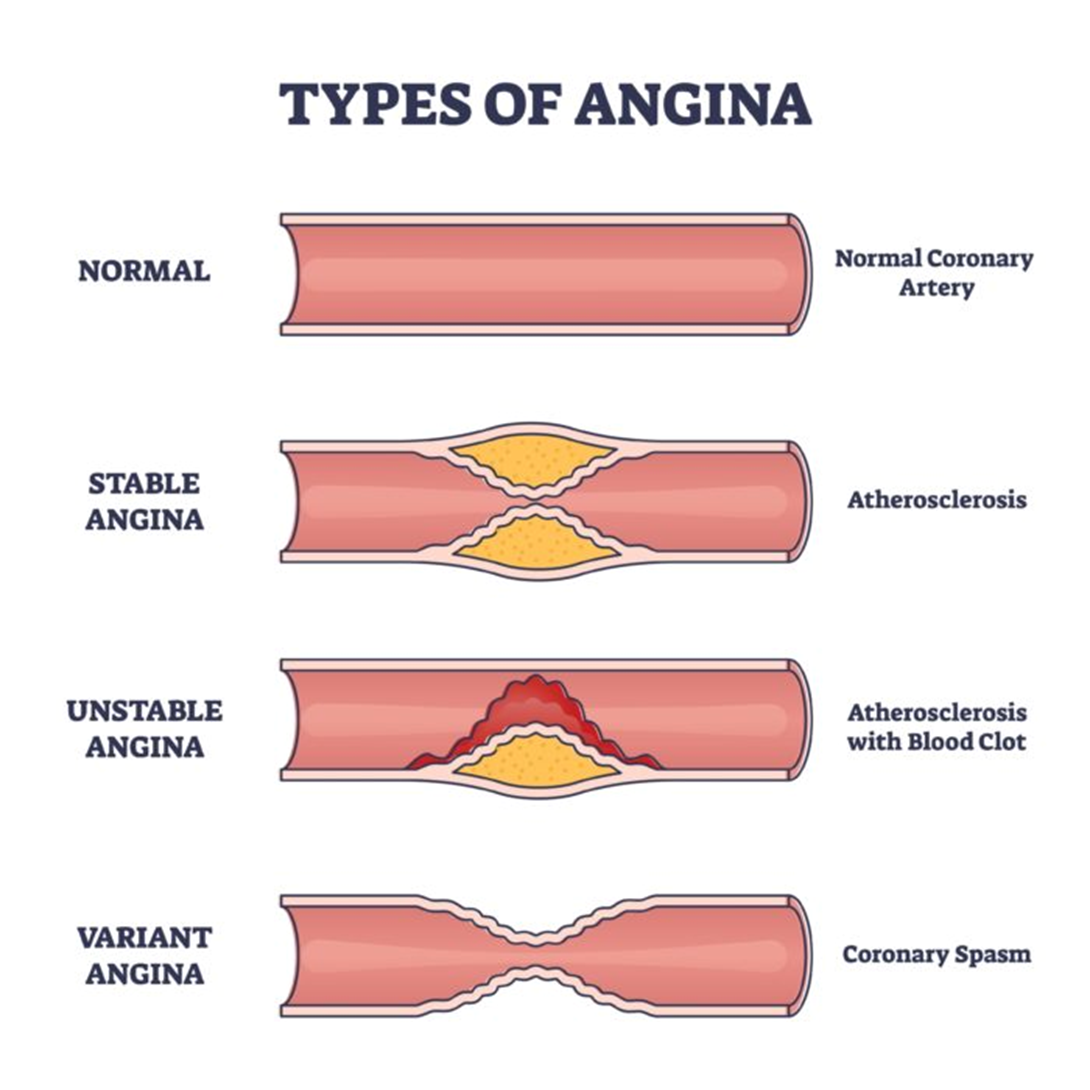A nurse is teaching a client who has angina about nitroglycerin sublingual tablets. Which of the following statements should the nurse include in the teaching?
"Place one tablet under your tongue every 5 minutes for 30 minutes to relieve chest pain."
"Nitroglycerin decreases chest pain by dissolving blood clots that are occluding the arteries."
"You can store the bottle of tablets in your bathroom medicine cabinet."
"Nitroglycerin dilates cardiac blood vessels to deliver more oxygen to the heart."
The Correct Answer is D
Choice A reason: "Place one tablet under your tongue every 5 minutes for 30 minutes to relieve chest pain." is not the correct statement. This is an incorrect and potentially dangerous instruction, as it can cause overdose and severe hypotension. The nurse should instruct the client to place one tablet under the tongue at the first sign of chest pain, and repeat every 5 minutes for up to three doses, if needed. The client should call 911 if the pain is not relieved after the first dose.
Choice B reason: "Nitroglycerin decreases chest pain by dissolving blood clots that are occluding the arteries." is not the correct statement. This is a false and misleading explanation of how nitroglycerin works. Nitroglycerin does not dissolve blood clots, nor does it affect the occlusion of the arteries. Nitroglycerin is a vasodilator that relaxes the smooth muscle of the blood vessels, especially the veins. This reduces the preload and the oxygen demand of the heart, and relieves the chest pain caused by ischemia.
Choice C reason: "You can store the bottle of tablets in your bathroom medicine cabinet." is not the correct statement. This is an inappropriate and unsafe storage recommendation, as it can affect the potency and effectiveness of the medication. The nurse should instruct the client to store the bottle of tablets in a cool, dry, and dark place, away from heat, moisture, and light. The client should also keep the bottle tightly closed and replace it every 6 months, or as directed by the provider.
Choice D reason: "Nitroglycerin dilates cardiac blood vessels to deliver more oxygen to the heart." is the correct statement. This is a simple and accurate description of how nitroglycerin helps to relieve anginal pain. Nitroglycerin dilates the coronary arteries, which supply blood and oxygen to the heart muscle. This improves the blood flow and oxygen delivery to the ischemic areas of the heart, and reduces the pain and discomfort.

Nursing Test Bank
Naxlex Comprehensive Predictor Exams
Related Questions
Correct Answer is C
Explanation
Choice A reason: Atropine is not the correct answer, as it is an anticholinergic medication that is used to treat bradycardia, not warfarin overdose. Atropine has no effect on the INR or the coagulation cascade.
Choice B reason: Epinephrine is not the correct answer, as it is a catecholamine medication that is used to treat anaphylaxis, cardiac arrest, or severe hypotension, not warfarin overdose. Epinephrine has no effect on the INR or the coagulation cascade.
Choice C reason: Vitamin K is the correct answer, as it is the antidote for warfarin overdose. Vitamin K is a fat-soluble vitamin that is essential for the synthesis of clotting factors II, VII, IX, and X. Vitamin K can reverse the effects of warfarin and lower the INR to a therapeutic range.
Choice D reason: Protamine is not the correct answer, as it is the antidote for heparin overdose, not warfarin overdose. Protamine is a protein that binds to and neutralizes heparin, but has no effect on warfarin or the INR.
Correct Answer is A
Explanation
Choice A reason: Suppressing respiratory effort is the correct purpose of pancuronium. Pancuronium is a neuromuscular blocking agent that paralyzes the skeletal muscles, including the respiratory muscles. This prevents the client from breathing spontaneously and allows the mechanical ventilator to control the ventilation. Pancuronium is used to improve oxygenation and prevent barotrauma in clients with ARDS, who have severe hypoxemia and stiff lungs.
Choice B reason: Decreasing chest wall compliance is not the correct purpose of pancuronium. Chest wall compliance is the measure of how easily the chest wall expands during inspiration. Decreasing chest wall compliance means increasing the resistance to lung expansion, which can worsen the ventilation and oxygenation in clients with ARDS. Pancuronium does not affect the chest wall compliance, but rather the muscle tone.
Choice C reason: Decreasing respiratory secretions is not the correct purpose of pancuronium. Respiratory secretions are the mucus and fluid that are produced by the respiratory tract to moisten and protect the airways. Decreasing respiratory secretions can cause dryness and irritation of the mucous membranes, which can increase the risk of infection and inflammation. Pancuronium does not affect the respiratory secretions, but rather the nerve impulses.
Choice D reason: Inducing sedation is not the correct purpose of pancuronium. Sedation is a state of reduced consciousness, awareness, or responsiveness. Inducing sedation can help to reduce anxiety, pain, and agitation in clients who are mechanically ventilated. Pancuronium does not induce sedation, but rather paralysis. Pancuronium does not affect the central nervous system, but rather the peripheral nervous system. The nurse should administer a sedative agent, such as propofol or midazolam, along with pancuronium to ensure the client's comfort and safety.
Whether you are a student looking to ace your exams or a practicing nurse seeking to enhance your expertise , our nursing education contents will empower you with the confidence and competence to make a difference in the lives of patients and become a respected leader in the healthcare field.
Visit Naxlex, invest in your future and unlock endless possibilities with our unparalleled nursing education contents today
Report Wrong Answer on the Current Question
Do you disagree with the answer? If yes, what is your expected answer? Explain.
Kindly be descriptive with the issue you are facing.
